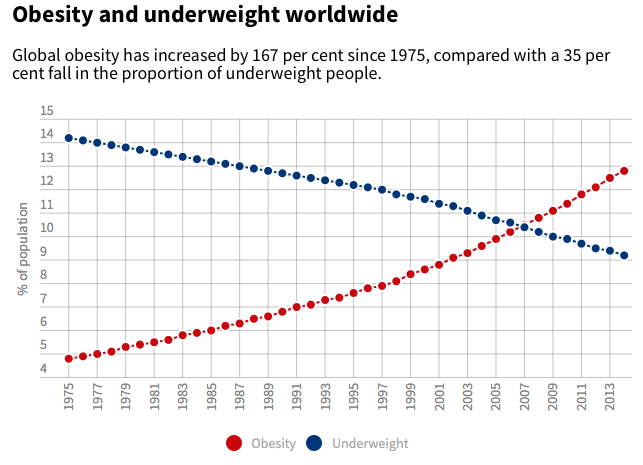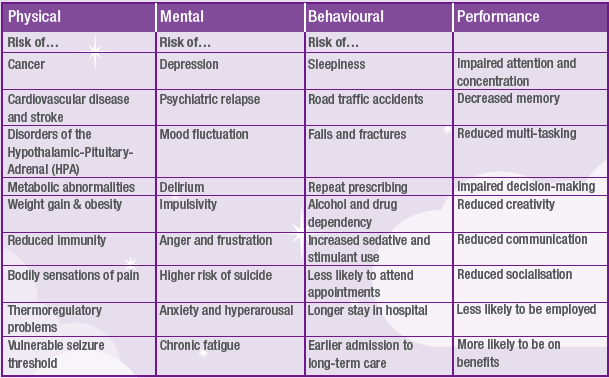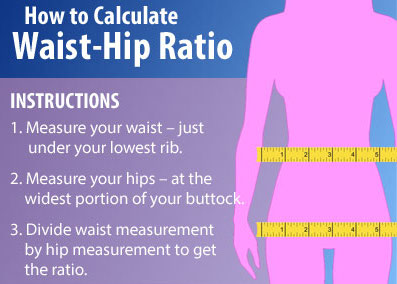Nutrition
A new paper from the New Zealand Medical Association outlines the highly effective, and very simple protocol for reversing and preventing diabetes – eat less carbs! Here’s a quote that sums it up perfectly:
“In individuals dependent on insulin and other hypoglycaemic medication, the difficulty of matching higher intakes of carbohydrates with the higher doses of medication required to maintain euglycaemia increases the risk of adverse events, including potentially fatal hypoglycaemic episodes. Thus, mechanistically it has always made sense to restrict carbohydrate in the diets of people with diabetes.”
Saturated fat is protective against colon cancer (in mice), according to a study in the American Journal of Physiology. The researchers compared high-fat diets (40% of calories) ranging in saturated fat content (6, 12, or 24%) and saw an inverse association with tumor burden, inflammation, and cell proliferation. As well as an improvement in gut integrity; which they attribute to an increased concentration of the protein Mucin 2.
Similarly, this systematic review in the journal PLoS One found no positive link between fat intake and prostate cancer. Despite the continued claims that there is.
Even a short-term gluten-free diet can result in a dramatic shift in gut bacteria, as this study from the journal Genome Medicine saw significant reductions in the Veillonellaceae family (class Clostridia) after only 4 weeks. Perhaps adding to the case that zero exposure is better than small doses of regular exposure?

Onion peels are rich in the health-promoting flavonoid, quercetin, and this is one of the many reasons you should eat it (along with berries and chocolate). This study, from the journal Nutrition Research & Practice, shows that it could also help reduce body fat.
As discussed in last week’s post, vegetable oils increase your risk of mortality (and probably heart disease and cancer). Here’s the study, which was an analysis of unpublished data from the Minnesota Coronary Survey that originally took place in the 70’s.
Gut bacteria samples from individuals in Belgium and the Netherlands have identified some interesting data with respect to the effect of certain foods on the microbiome. With researchers identifying an increase in biodiversity with those consuming more red wine and coffee, and a decrease in diversity for those consuming carb-heavy diets.
A review study in the American Journal of Medicine shows that a Mediterranean Diet is better than a low-fat diet long-term, but outside of that there’s nothing special about it for fat loss or heart health. Cut the grains, add some animal fat, and I bet it’s a different story.
They’re called lignonberries, and just like other berries, they’re great for feeding gut bacteria. This study from the journal Food and Nutrition Research shows 11-week consumption of these berries (on top of a High-Fat diet) increases Akkermansia and Faecalibacterium that promotes healthy mucosa and lowers inflammation.
Fitness
This disturbing study in the International Journal of Behavioral Nutrition and Physical Activity shows that a mere 8% of children are getting 30-minutes of activity during the school day, and 15% getting 60-minutes of total daily activity. What’s worse, is that this was for 3rd, 4th, and 5th graders! Imagine what the teenagers with smart phones are doing!!

No shocker here, but training the major muscle groups 2 times per week produces a far better hypertrophic response than once per week. Unfortunately, the researchers didn’t feel they had enough evidence to say whether 3 times was better than 2.
This was a small study from the Journal of Physiology (16 subjects), but it found that antihistamines blocked a good chunk (more than 10%) of the recovery genes upregulated after exercise.
27 hours of traditional cardio is equivalent to 36 minutes of high-intensity exercise, when it comes to improving aerobic fitness and cardiometabolic health. Sorry marathon monkeys, that wasn’t a typo; as researchers in the Journal PLoS One found similar improvements in peak oxygen uptake, insulin sensitivity, mitochondrial function and Vo2peak after 12 weeks of 1-min all-out intensity (over 10-minutes) or 50-min of moderate continuous activity.
An interesting study from the journal Experimental Physiology shows that 1-min rest periods between resistance training results in higher levels of muscle-building hormones in the short-term (0-4hrs post-exercise) but lower levels in the long-term (24-48hrs) when compared to longer rest periods (in this case 5 minutes). Which isn’t to say that you should rest for 5 minutes between sets, but definitely demonstrates the need for ‘adequate rest’ when trying to maximize muscle gains. In 1% Fitness, this is approximately 90-120 seconds when training for muscle and 180 seconds ore more when training for strength.
Body Composition
This paper, published in the Lancet, identifies the sad reality that is obesity. With ridiculous figures that only an image can do justice:

Muscle makes a difference when it comes to cardiovascular disease mortality, according to this study in the American Journal of Cardiology. So, stop weighing yourself, and start eating meat and lifting weights!
Lifestyle
More evidence that regular cold exposure can keep you lean, with researchers from Japan showing smaller waistlines for elderly folks that keep their house cool in the winter. Similar to what we’ve discussed in the past, the scientists attribute it to the activation of brown fat to generate body heat (cold thermogenesis).
Mindfullness (aka meditation) appears to have a positive impact on depressive symptoms that parallels anti-depressant medication, says research from JAMA Psychiatry. Something you’ll have an easier time getting behind when you learn more about our desperate need for ‘down-time’ in the 21st century.
Near-sightedness (myopia) is a growing concern, and there’s no denying that it’s directly related to screen time. According to research from a group of Australian optometrists, the solution is “more exposure to outdoor light.”
Look out for an ingredient called triclocarban (TCC), found in many antibacterial soaps and personal care products, as it appears to mess with gut microbes in both mother and baby (at least in rats).
You’ll also want to continue being conscious of the plasticizers and pesticides, regardless of what your naysaying friends and family members think. As according to a report from Germany, the evidence showing that these chemicals increase endometriosis and uterine fibroids in women can’t be ignored. Especially since it’s estimated to cost the European Union $1.4 billion per year. The same goes for BPA and reproductive health in rats (study 1, study 2)
A report from the Royal Society for Public Health shows that UK residents are missing out on at least 1hr of sleep per night. And not surprisingly, it’s having a huge impact on their mental and physical health – depression, weight gain, heart disease, lowered immunity, cancer, the list goes on:

And this paper from Scientific Reports adds to that, by showing an increased risk of cardiovascular disease with sleep loss. But more specifically, showing that inflammation and reductions in HDL cholesterol are likely to blame for the outcome
I’ve said it before, and I’ll say it again – “get a dog!” In this study from the Gerotontogical Society of America, senior pet owners had a lower body mass index, fewer activities of daily living limitations, fewer doctor visits, and more frequent moderate and vigorous exercise. Not to mention the companionship that comes with owning a pet.
Health & Longevity
It should be nothing new to learn that the gut and brain are connected, but this study from the journal Translational Psychiatry brings it full-circle, by showing that depletion of gut microbes can alter more than 90 genes in the brain. Specifically those that affect myelin in the prefrontal cortex – also known as the region that’s often damaged in cases of depression, Alzheimer’s, and autism.
Likewise, a study from the Journal of the National Cancer Institute discusses how the ability of our microbes to metabolize estrogens may be associated with breast cancer risk. This disrupted ‘estrobolome,’ is likely also linked to the fibroids, endometriosis, and PCOS that’s characteristic of estrogen dominance.
New evidence from Intermountain Medical Center Heart Institute in Salt Lake City demonstrates that a high-fat diet is less protective against heart disease if you’re not controlling inflammation. Since the inflammatory marker Glyc A (glycoprotein acetylation) reduces any of the protective benefits from HDL cholesterol. In other words, go ahead and eat the fat, but you gotta ditch the bun!
BMI can be a poor predictor of body composition, so it’s usually best ignoring. However, waist-to-hip ratio is an excellent predictor, and this review study in the journal Circulation shows that a 0.1-unit increase equates to a 29% increased risk of heart failure.

Research presented at the Endocrine Society meeting in Boston this month shows an increased risk of developing diabetes or pre-diabetes in those with a low or disrupted thyroid. Which seems to be one more reason upping your carbohydrates to treat your underactive thyroid is a bad idea; despite being a common recommendation in Paleo Land. Realistically, there’s s a higher likelihood the problem is excess stress (cortisol), inadequate food, or a damaged gut.
This month has also shown that individuals suffering from depression are also more more likely to develop diabetes. Which should further help you understand (if you haven’t already), that disorders of the brain are the result of the same metabolic dysfunction that leads to diabetes (insulin resistance and inflammation). A great example being this new study from the Journal of Alzheimer’s Disease discuss the impact of chronically elevated insulin (hyperinsulinemia) on the development of Alzheimer’s disease. The key point being, the enzymes required to breakdown insulin also break down beta amyloid to form plaques in the brain.
Evidence on mice in the journal Clinical Cancer Research used a ketogenic (low-carbohydrate, high-fat) diet supplemented with coconut oil to extend the life of mice with Glioblastoma (the most common brain tumor in adults). Effectively reducing the growth of the gliobastoma tumor cells.
Medication & Supplementation
This article in the Scientific American highlights a recent study that shows acid-blocking drugs (or heartburn meds) decrease bacterial diversity in the gut. Not only lowering the beneficial components, but as we’ve discussed in the past, increasing the risk of bad bacterial overgrowth and infection. The better solution is fixing your digestion; which involves INCREASING your stomach acid.
Vitamin D supplementation improves heart function in those that have already experienced chronic heart failure. The study, from the Journal of the American College of Cardiology, split 229 patients into a supplementation group (given 4,000IU’s per day) and a control group (given a placebo) and saw significant improvements in cardiac function and left ventricular remodeling after 1 year.
Raising vitamin D levels also helps lower cancer risk, according to new evidence in the journal PLoS one. With a blood level greater than 40 ng/mL showing a 67% reduced risk compared to one less than 20 ng/mL.
The probiotic Bifidobacterium lactis appears to produce significant improvements in cardiometabolic biomarkers (inflammation, LDL cholesterol, etc), based on this randomized trial in the journal Nutrition that had 51 patients with the metabolic syndrome consume it for 45 days. The study used fermented dairy products, although it’s also obtainable via kefir, or probiotic supplementation.
Stay Lean!
Coach Mike
RELATED ARTICLES:
How Poor Sleep Makes You Fat & Sick
STOP Taking Antacids For Heartburn & Reflux
Beyond Live It NOT Diet! - Consider The Cold Shower
Exercise Intensity Trumps Exercise Duration For Disease Prevention

